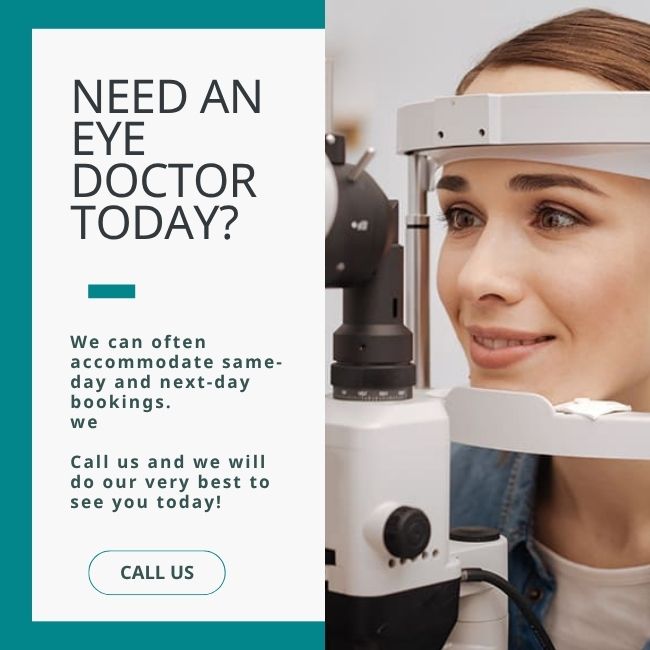Dry eyes can feel like a constant battle. You might find yourself struggling to read your favourite book, work on your computer, or even just enjoy a breezy day outside. These moments of discomfort can easily disrupt your daily life. It’s no wonder people seek relief wherever they can.
One such popular path to relief is through a balanced diet rich in omega-3 fatty acids. Research is mixed, but there is some evidence that omega-3 fatty acids can help alleviate dry eye symptoms.
What Is Dry Eye Disease?
Dry eye disease is a common issue that affects around 30% of Canadians. It’s not just a minor inconvenience; it’s a persistent problem that occurs when your eyes don’t get enough moisture from tears. This can happen for two reasons:
- Aqueous deficiency: Your eyes don’t make enough tears.
- Evaporative: Your tears are of low quality and evaporate too quickly.
While anyone can experience dry eyes, you’re more likely to get them due to factors such as age, the environment, hormonal changes, and spending too much time looking at screens. When your tear film, the protective layer of your eyes, gets out of balance, it can lead to inflammation and damage to the eye’s surface. Common dry eye symptoms include:
- Burning or scratchy sensation
- The feeling of something in your eye
- Irritation
- Redness
- Blurry vision
- Light sensitivity
- Mucus discharge
- Excessive tearing
This condition can really affect your daily life, making even simple tasks difficult. However, with the right knowledge and treatment, relief is possible.
What Are Omega-3 Fatty Acids?
Omega-3 fatty acids are essential fats that your body cannot produce on its own. Instead, they must be obtained through your diet. These fats are found in high concentrations in certain fish, flaxseed, chia seeds, and walnuts.
While fats can get a bad reputation, there is a big difference between types of fat. Omega-3s are a type of polyunsaturated fat, a “good” fat that is essential for cell growth. There are 3 primary types of omega-3 fatty acids:
- ALA (alpha-linolenic acid)
- EPA (eicosapentaenoic acid)
- DHA (docosahexaenoic acid)
How Omega-3 Fatty Acids Help with Dry Eye
The role of omega-3 fatty acids in helping with dry eye is constantly shifting. We know DHA and EPA—the omega-3s found in fish—are important for the body, and there is evidence that they may improve tear quality and reduce inflammation. At least one study found that those who consumed omega-3 fatty acids reduced their risk of dry eye pain by around 17%. Good tear quality is vital for avoiding dry eye, as tears are more than simply water.
For tears to effectively lubricate your eyes, they need to be of good quality. The tear film has 3 layers:
- Oily layer: Keeps the tear smooth and prevents evaporation
- Watery layer: Provides moisture and nutrients to the eye’s surface
- Mucus layer: Keeps the tear attached to the eye
The oil that makes up the oily layer is produced by the meibomian glands, tiny glands that line the eyelids and secrete meibum. If they become inflamed or blocked, they’re unable to provide this essential oil. And, just like that, you have dry eyes.
By reducing inflammation, omega-3s can maintain the proper functioning of these glands, which can, in turn, prevent the tears from evaporating too quickly.
Incorporating Omega-3 into Your Diet
Try including these omega-3-rich options in your meals:
- Fish: Fatty fish like salmon, mackerel, and sardines are rich sources of EPA and DHA.
- Nuts and seeds: Walnuts, flaxseeds, and chia seeds contain ALA, which the body can partially convert to EPA and DHA.
- Leafy greens: Vegetables like spinach and kale also provide ALA, though in smaller amounts.
If you find it challenging to get enough omega-3s from your diet, consider taking a high-quality fish oil supplement. Once again, research is mixed, but fish oil could help relieve mild dry eye alongside other effective treatments. Always consult with your healthcare provider before starting any new supplement regimen.
Treatments Beyond Omega-3s
Incorporating omega-3 fatty acids is only the start. Other lifestyle changes can help manage dry eye symptoms:
- Stay hydrated: Drink plenty of water throughout the day.
- Take breaks from screens: Follow the 20-20-20 rule—every 20 minutes, take a 20-second break and look at something 20 feet away.
- Use a humidifier: This can add moisture to the air, reducing the fast evaporation of tears.
- Wear sunglasses: Protect your eyes from wind and sun, which can exacerbate dryness.
Your optometrist can also help you find relief through a range of treatments designed to address symptoms at their source. It all starts with a comprehensive eye exam, followed by personalized treatment that may include:
- Radiofrequency treatment
- Thermal pulsation
- Eyelid cleaning
- Lid scrubs
- Artificial tears and prescription eye drops
See the Difference
Your eyes deserve the best. At Trinity Hills Eyecare, we specialize in providing eyelid hygiene to help you overcome dryness and enjoy comfortable vision again. Using our gentle cleansing therapies alongside Tempsure Envi’s powerful radiofrequency treatment to address meibomian gland dysfunction, we can personalize your path to relief.
Schedule an appointment with us today, and take the first step towards clearer, more comfortable vision.




